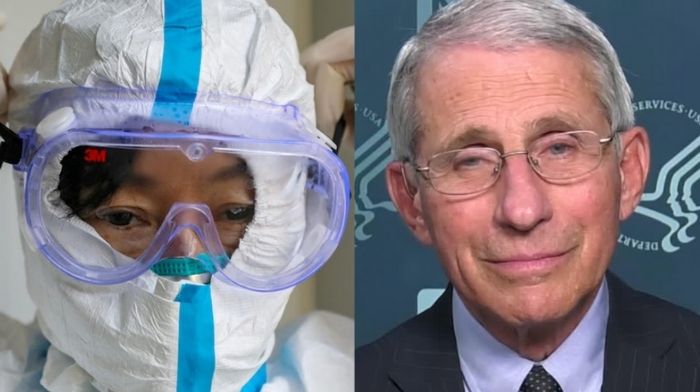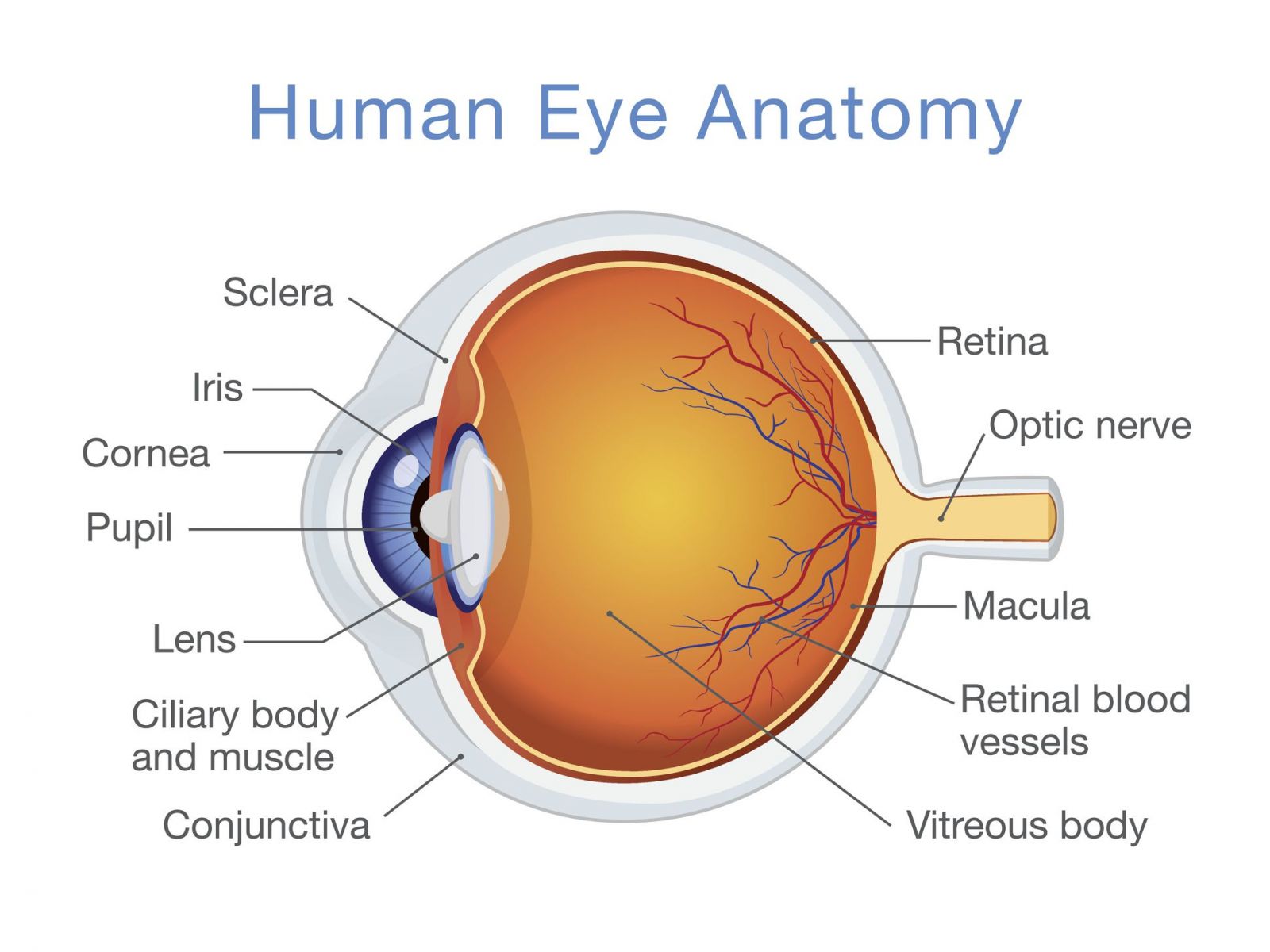COVID-19 Ophthalmology: SARS-CoV-2 Does Attack The Eyes And Can Also Be An Entry Point For The Virus, Hence The Need To Also Wear Goggles
Source: COVID-19 Ophthalmology Aug 02, 2020 5 years, 4 months, 4 days, 13 hours, 26 minutes ago
COVID-19 Ophthalmology: As early as February, Thailand Medical News had warned readers about the fact that the SARS-CoV-2 coronavirus could affect the eyes (
https://www.thailandmedical.news/news/breaking-news:-new-report-in-lancet-confirms-that-coronavirus-can-spread-through-eyes) but we were met by skepticism from many American readers and American medical professionals. In May we covered another report about emerging eye infections from the SARS-CoV-2. (
https://www.thailandmedical.news/news/covid-19-symptoms-more-covid-19-patients-manifesting-eye-problems).

But now just because white House advisor Dr. Anthony Fauci said during an interview on Instagram last week that wearing goggles or eye shields in addition to a mask might be a good idea to avoid Covid-19, majority of the stupid Americans are finally waking up and accepting it and no longer challenging us.
Dr Fauci, the director of the National Institute of Allergy and Infectious Diseases who just like Trump, also messed up a a lot of issues on the management of COVID-19 crisis in America said, “Theoretically, you should protect all the mucosal surfaces. That includes your nose, mouth and eyes. So if you have goggles or an eye shield, you should use it.”
To date, there are no rules around the general public wearing eye protection. But recent studies (
https://www.thelancet.com/journals/lancet/article/PIIS0140-6736(20)31142-9/fulltext#seccestitle150 ) show that wearing eye protection can decrease the likelihood of infection for healthcare workers.
Face masks or cloth face coverings, on the other hand, are mandated in more than 30 states.
Please Help To Donate To Sustain This Site And Other Research We Are Propelling. Thank You. https://www.thailandmedical.news/p/sponsorship
From what doctors know about how Covid-19 spreads, it’s likely possible to get infected through your eyes, but not common, says Dr Thomas Steinemann, clinical spokesperson for the American Academy of Ophthalmology.
But it makes sense to use eye protection (in addition to a mask) anywhere you can’t effectively maintain social distance from others for an extended period, Dr Steinemann says.
Eye protection would be appropriate for a passenger on a plane or for a hair stylist who is face-to-face with several customers a day. The airline Qatar Airways along with other concerned international airlines announced in May that cabin crew members must wear safety goggles as part of their mandatory personal protective equipment.
Doctors, nurses and other healthcare workers who are in close contact with patients should also wear
eye protection, according to the CDC, especially “in areas with moderate to substantial community transmission.”
People must first understand that COVID-19 is not just a pulmonary disease, The SARS-CoV-2 coronavirus can affect almost every part of the body. Systemic diseases work systematically, after all.
A detailed research paper on the topic of Covid-19 and the eyes was published in the journal Clinical and Experimental Ophthalmology in June.
https://www.ncbi.nlm.nih.gov/pmc/articles/PMC7274940/
Medical and Ophthalmology researchers from Turkey examined 93 hospitalized patients with Covid-19, 20 of whom (21.5%) presented at least one of the following ocular (eye) symptoms:
-Hyperemia (red eye): 20 (21.5% of patients)
-Epiphora (excessive tear flow): 9 (9.7% of patients)
-Increased secretion (of green or yellow eye fluid): 6 (6.5% of patients)
-Chemosis (swelling of conjunctiva): 3 (3.2% of patients)
-Follicular conjunctivitis (more severe chemosis): 8 (8.6% of patients)
-Episcleritis (inflammation of eye sclera): 2 (2.2% of patients)
-Photophobia (intolerance to light): 15 (16.1% of patients)
-Itchiness: 13 (15.7% of patients)
-Burning sensation: 7 (8.4% of patients)
-Gritty feeling (eye irritation that feels like sand): 5 (6.0% of patients)
-Blurred vision: 4 (4.8% of patients)
The researchers noted that risk factors for Covid-19 ocular problems were old age, high fever, and elevated biomarkers of systemic inflammation (i.e., neutrophil/lymphocyte ratio, C-reactive protein, and erythrocyte sedimentation rate).

A research review out of Mexico’s Center for Preventive Visual Health and its Institute of Ophthalmology shows that the prevalence of Covid-19 ocular symptoms varies widely.
https://www.scielo.br/scielo.php?script=sci_arttext&pid=S0004-27492020000300016&lng=en&nrm=iso&tlng=en
One study found none of 114 Covid-19 patients had any ocular symptoms (
https://papers.ssrn.com/sol3/papers.cfm?abstract_id=3543587) whereas another noted ocular signs in 12 (31.6%) out of 38 patients. (
https://jamanetwork.com/journals/jamaophthalmology/fullarticle/2764083). The actual prevalence of ocular complications may be closer to 3%, as calculated by a meta-analysis of six studies comprising 854 Covid-19 patients.
https://papers.ssrn.com/sol3/papers.cfm?abstract_id=3566161
Please Help To Donate To Sustain This Site And Other Research We Are Propelling. Thank You. https://www.thailandmedical.news/p/sponsorship
In late May, a study findings in the journal Ocular Immunology and Inflammation,(
https://www.tandfonline.com/doi/full/10.1080/09273948.2020.1770301) indicated that German researchers had detected SARS-CoV-2 genetic material in the retina of three out of 12 deceased patients. And prior research has, in fact, found the expression of ACE2 (the main receptor SARS-CoV-2 uses to infect cells) in the human retina.
https://iovs.arvojournals.org/article.aspx?articleid=2183988
The area of concern ie the retina is the back part of the eye where the optic nerve sits. Any information the retina receives is relayed to the brain via the optic nerve.
Another study in
The Lancet also shed light on this topic. Using a noninvasive eye imaging technique called optical coherence tomography (OCT), researchers at the Paulista Institute of Studies and Research in Ophthalmology in Brazil detected damage to the retina and optic nerve in all 12 Covid-19 patients tested. However, these patients experienced no visual impairment.
https://www.ncbi.nlm.nih.gov/pmc/articles/PMC7217650/
Yet another OCT study was published in the
Journal of Medical Virology. Here, Ophthalmologists at the Hospital Clinico Universitario San Carlos in Spain found increased inflammation of the optic nerves in all five patients tested compared to when they did not have Covid-19. And, again, none experienced visual loss, which implies that the optic nerve inflammation may not have been severe enough to rupture the nerve completely.
https://onlinelibrary.wiley.com/doi/full/10.1002/jmv.26290
Chinese researchers in February detected, for the first time, SARS-CoV-2 genes in tears and conjunctival secretions in one patient out of a sample of 30. That one patient also had conjunctivitis (inflamed eye membranes) while the remaining 29 did not.
https://onlinelibrary.wiley.com/doi/10.1002/jmv.25725
Sometimes SARS-CoV-2 is present in eye fluids and sometimes not. The prevalence ranges from 0% to 7.14%. It appears that SARS-CoV-2 can sometimes infect the eyes.
The reasons for this may be due to innate defense mechanisms, such as antimicrobial peptides in tears and eye surfaces or the tears flushing viral particles away.
The fact that the eye conjunctiva expresses ACE2 receptors, according to a study in
Nature, supports the possibility of Covid-19 eye infection.
https://www.nature.com/articles/s41433-020-0939-4
A receptor is a prerequisite to cell infection after all. A resarch paper in the
Lancet Respiratory Medicine has confirmed that SARS-CoV-2 replicates in conjunctival cells (in a lab dish) to a greater extent than SARS-CoV-1. “The conjunctival epithelium and conducting airways appear to be potential portals of infection for SARS-CoV-2,” the study authors concluded.
https://www.thelancet.com/journals/lanres/article/PIIS2213-2600(20)30193-4/fulltext#%20
Even if SARS-CoV-2 does not infect the eyes, it may still harm the eyes in indirect ways. Covid-19-induced excessive inflammation, hypoxia (low oxygen levels in the blood), or blood clotting can disturb distant organs, including the eyes. For instance, a 2004
Lancet review noted that systemic inflammation caused by infections (e.g., HIV, tuberculosis, or hepatitis) could harm various parts of the eye, such as the sclera, cornea, and retina.
https://www.thelancet.com/journals/lancet/article/PIIS0140-6736(04)17554-5/fulltext
There are also reports of Covid-19 transmission via the eyes specifically of health care workers who wore masks and appropriate personal protective equipment (PPE) but no eye protection and somehow contracted Covid-19 and conjunctivitis.
However the claims as to transmission via the eyes remains unclear. Although there is currently no confirmed conjunctival transmission route, many doctors agree with the WHO and other organizations’ recommendations that PPE must include eye protection such as goggles or face shields.
Although Covid-19 eye transmission may be possible, it is likely rarer than contaminated droplets entering the respiratory tract. This is based on the infrequent occurrence of eye inflammation in Covid-19 cases.
So as Dr Fauci said, if you have eye protection already, you should use it. So, what really counts as protective eyewear?
Typical eye glasses or sunglasses can provide some protection, but they’re not foolproof, due to the openings on the top, bottom and sides where aerosols could still get in.
Contact lens wearers might want to consider wearing glasses to avoid touching your eyes, the American Academy of Ophthalmology suggests.
Proper face shields work because they protect the crown and chin from exposure, as well as the eyes. The clear plastic wraps around the face to the point of each ear to protect the wearer from splashes and sprays. Although they provide good eye protection, you still have to wear a mask when wearing a face shield in order to cover your nose and mouth.
In order to be protective, goggles should “fit snugly, particularly from the corners of the eye across the brow,” the Centers for Disease Control says.
For more about
COVID-19 Ophthalmology, keep on logging to Thailand Medical News.
Read also:
https://www.thailandmedical.news/news/ophthalmology-eyewear-and-covid-19-safety
Please Help To Donate To Sustain This Site And Other Research We Are Propelling. Thank You. https://www.thailandmedical.news/p/sponsorship

